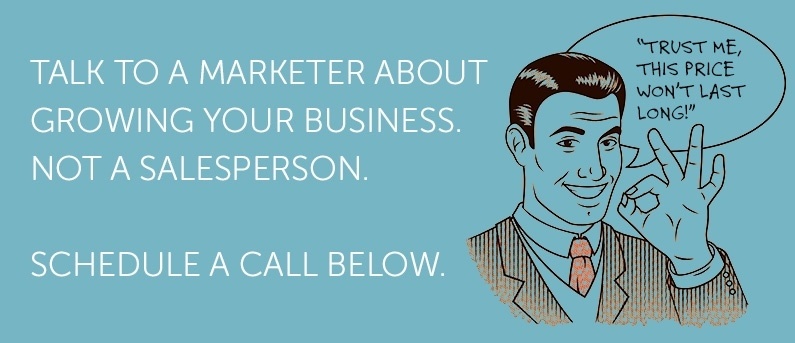
Imagine that you’re standing in line at a vendor booth at an industry trade show.
You’re waiting your turn to talk to the sales rep of a company that your firm is considering doing business with.
You notice that as the rep talks one at a time with the people in the line ahead of you, he asks for their business card, drops it into a goldfish bowl on the table, and then, as the person leaves, retrieves the business card from the bowl, tears it into pieces, and throws it into a trash can under the table.
What do you think of this sales rep? You likely think this rep is crazy. After all, who in their right mind pays thousands of dollars to attend a trade show with the sole purpose of generating leads, and then discards most of the leads as soon as the lead has walked away? The majority of sales and marketing reps, that’s who.
Industry surveys consistently demonstrate that 70% of trade show leads are never followed up with after the show. In other words, the majority of sales and marketing reps who use trade shows to generate leads fail to follow up with 7 in 10 of the potential customers that they meet at their booth.
Trade show leads are expensive. When you factor in the cost of flights, show admission, booth rental, shipping materials to the event, meals and accommodation, each lead you generate at your booth may cost your firm thousands of dollars. This is why follow up is so vital. Sales success is in the follow up.
Leads fall through the cracks because of four common obstacles. Here they are, and here’s how to overcome them.
Obstacle #1: No method for prioritizing leads
One common problem after trade shows is knowing which leads to follow up with first. This is where many leads get neglected. Reps follow up with the leads they remember are hot, and they neglect the leads who are not ready right now.
The solution is to score your leads. First enter them into a CRM (such as SalesForce, Pipedrive or HubSpot). Enter a note about everything relevant that you discussed with this lead at the show (their role, purchasing authority, their firm’s buying process, and so on).
Then assign each lead a score based on your criteria for what a hot lead looks like. Typically, a hot lead needs your product, has the budget, and is ready to buy now. Then score the remaining leads according to their level of importance.
Keep this scoring simple. You can use a simple lead scoring scheme of hot, medium, cold. Or Now, Next Quarter, Next Year. This scoring exercise helps you prioritize your leads.
Obstacle #2: No way to follow up with leads at scale
Another reasons that 70% of leads generated at trade shows are never followed up on is that sales reps have the same finite number of hours in their day as you do. Following up manually (by phone, email and LinkedIn, for example) is cumbersome and time-consuming.
One way to overcome this obstacle is to automate your follow up. Robust CRMs feature marketing automation tools that do your follow up while you are doing other things. You create the follow-up sequence, add your trade show leads to the sequence, and the marketing automation software takes care of the rest.
A typical follow up sequence will include a “Good to meet you at the show” email sent the day after the show, followed up a week later with another email, and a week later with an alert for you to call the lead. You customize everything about the sequence, including how you follow up, what you say each time you follow up, and how often you follow up. The beauty of marketing automation software is that it guarantees that you follow up with 100% of the leads you meet at every trade show.
Obstacle #3: Not knowing what to say when following up
You don’t have any trouble knowing what to say to hot prospects who walk up to your booth. Following up with them is easy. But what about all the other leads, the medium and cold leads, for example, who are not ready to talk with a sales rep right now? One of the reasons that so many leads fall through the cracks after trade shows is that sales reps don’t know what to say when following up.
The solution is to create a series of content assets that meet the needs of your leads at each stage of their buyer journey. Think white papers, case studies, blog posts, buying guides, product-demo videos and other resources that your buyers find useful when considering a solution like yours.
Then build these assets into your follow up sequence, spaced out at intervals that make sense to your leads. Each time you reach out to a lead, engage them with useful, helpful information that helps them solve a business challenge. And moves them closer to choosing your solution.
Obstacle #4 Not tracking engagement
The challenge with many sales teams is that they are flying blind. Unless they are talking with a lead on the phone, or unless they are in contact with them by email, they don’t know what the lead is up to.
This is another reason that sales reps drop the ball with post-show lead follow up. If a sales rep thinks a lead has gone silent, the sales rep thinks the lead is no longer interested. But this may not be the case.
One of the greatest values of integrated CRMs is that they help you track the engagement rates and interest levels of your leads when you aren’t looking. The best CRMs alert you whenever a lead takes a significant action with your emails or on your website, helping you follow up with your hottest leads.
For example, once you enter a lead’s name and email address into your CRM, the CRM tracks that lead’s activity with your brand. The CRM tells you when the lead opens your emails, for example. And which links in which of your emails the lead clicks on. The more sophisticated CRMs integrate with your website so that you track which pages your lead visits and how long they stay on the page.
As you can imagine, knowing that a lead you met at a trade show weeks ago downloaded your white paper last Wednesday, visited your case study page yesterday, and today is reading your pricing page puts you in a much better position to follow up intelligently with that lead.
Conclusion
The most valuable real estate in trade show lead generation isn’t the 10′ x 10′ trade show booth you stand in. It’s the 10′ x 10′ office or cubicle you sit in back at your office. That’s where the power of trade show lead generation is found—as you follow up after the show with every lead you met at the show.
If you want to improve your follow-up after trade shows, use a CRM and marketing automation software to prioritize your leads, follow up at scale, know what to say, and track engagement. You’ll boost your results—automatically.
-----------------
Need help with your marketing automation?
Call George Moustakelis for a complimentary consultation.





